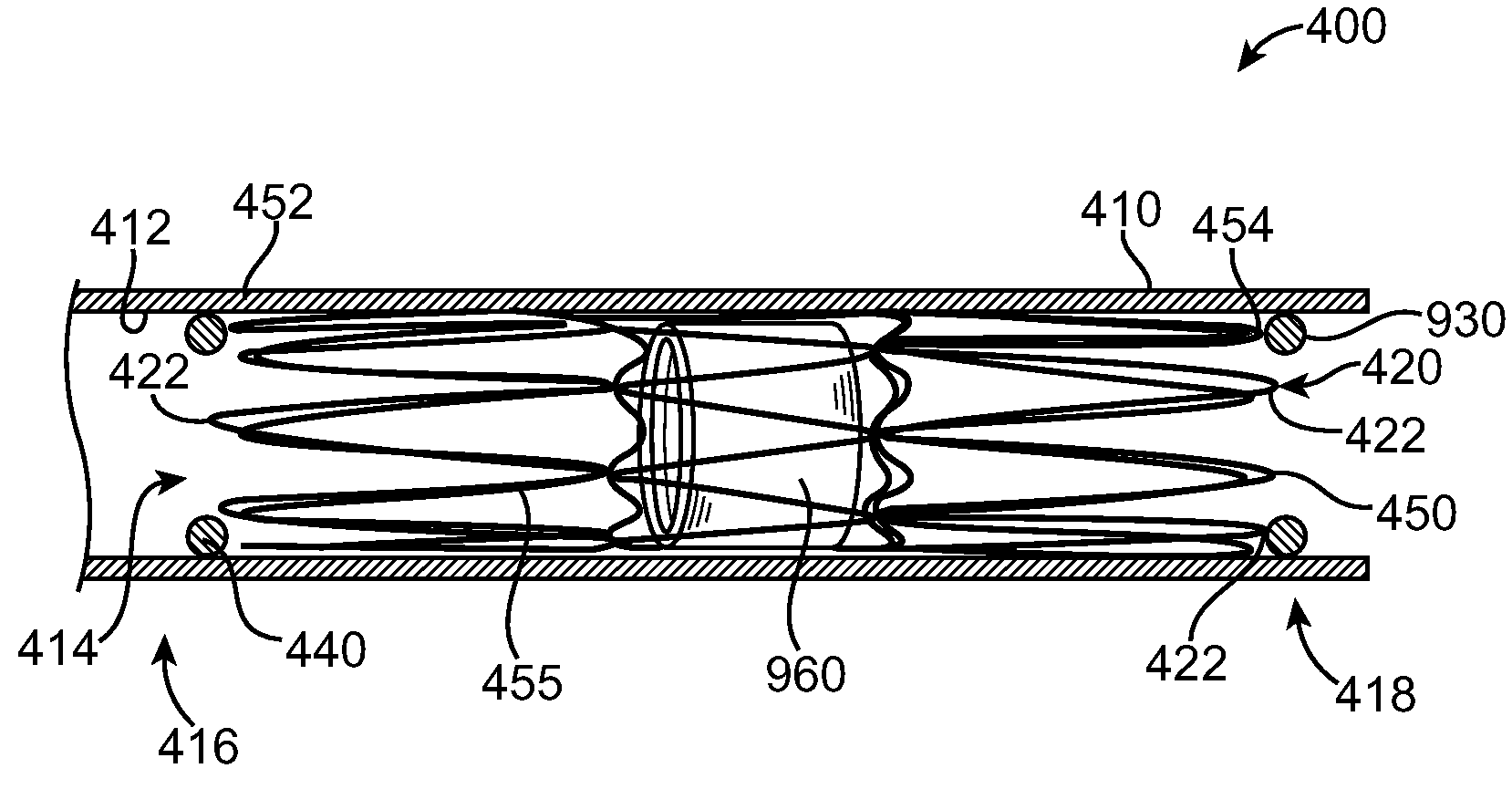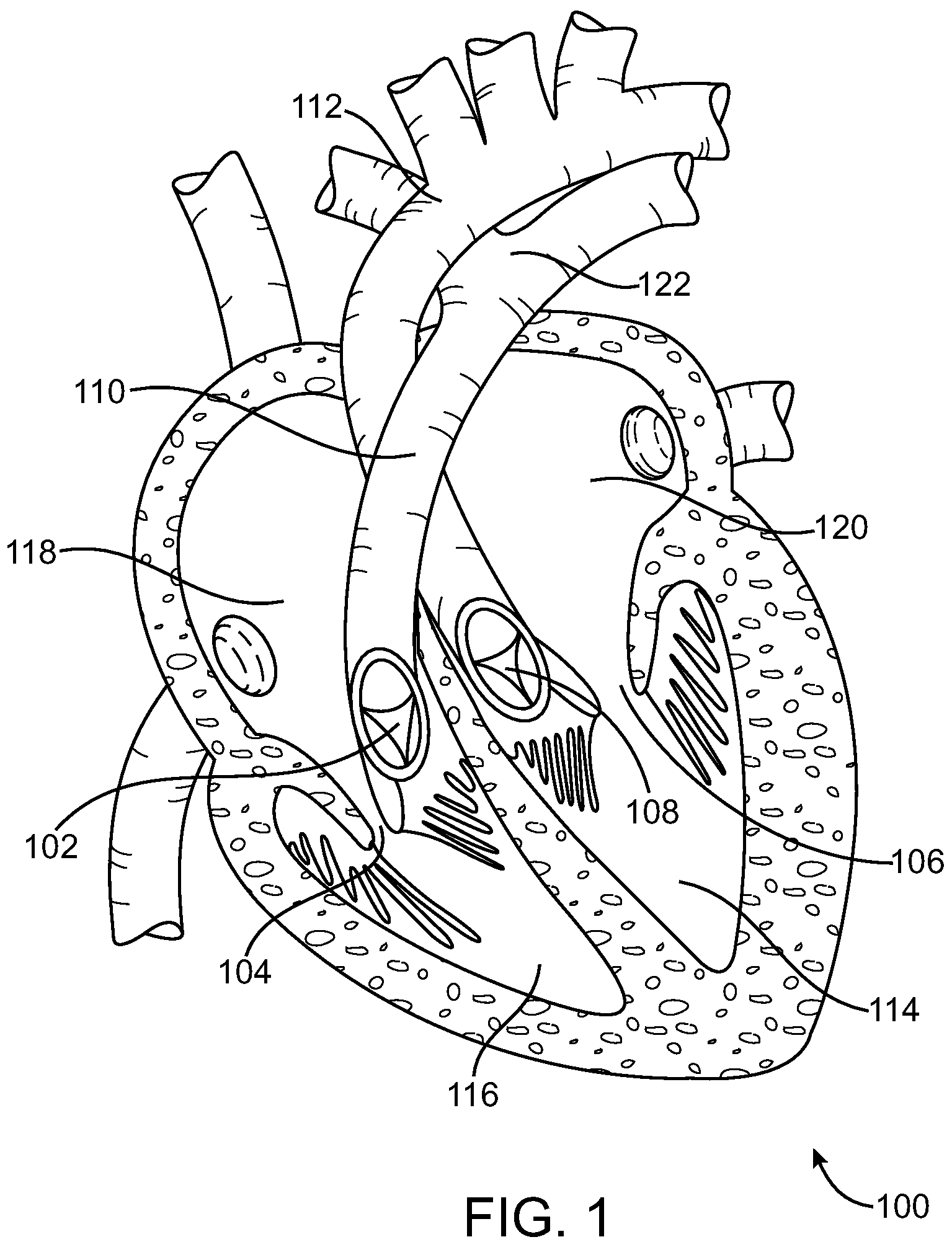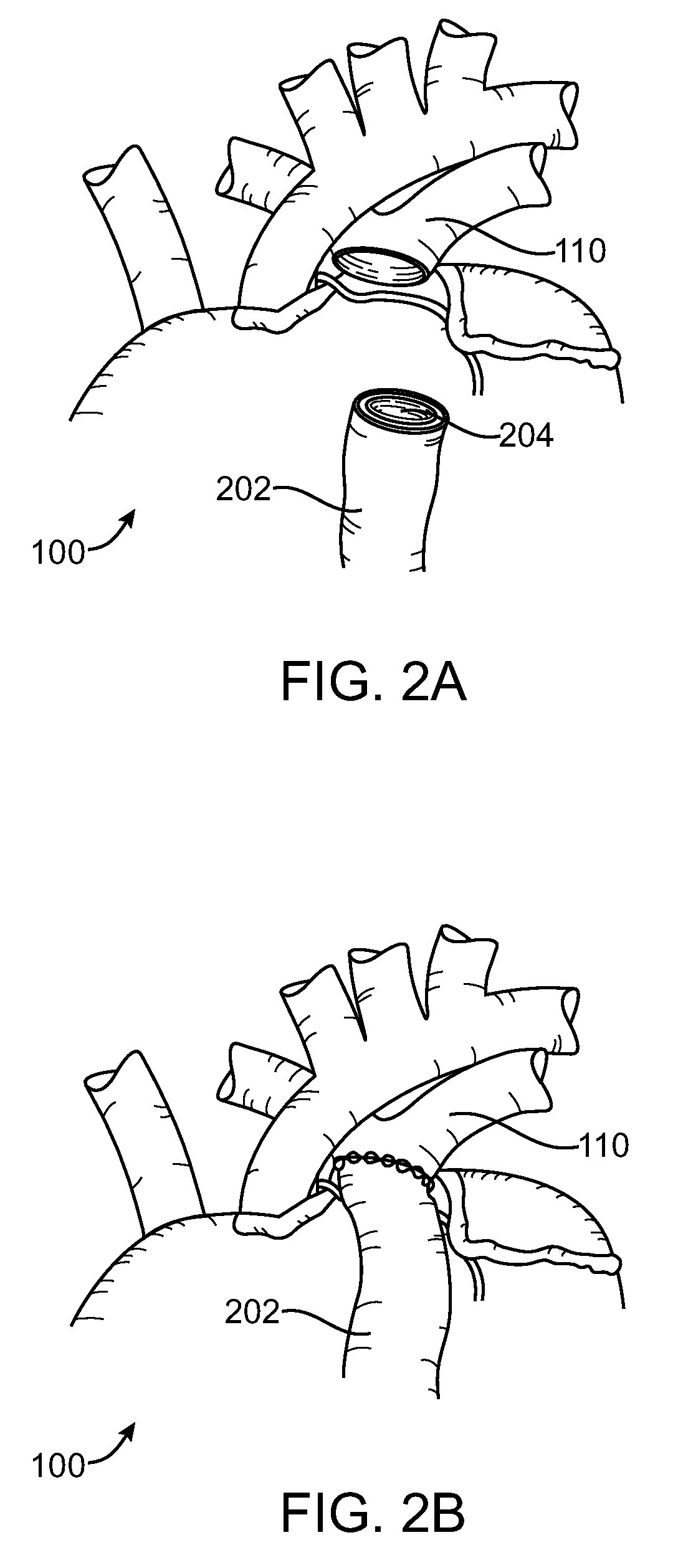Valved conduit designed for subsequent catheter delivered valve therapy
a valve and catheter technology, applied in the field of pulmonary valve replacement system, can solve the problems of leaking backward across, restricted blood flow, and valve dysfunction,
- Summary
- Abstract
- Description
- Claims
- Application Information
AI Technical Summary
Benefits of technology
Problems solved by technology
Method used
Image
Examples
Embodiment Construction
[0032]The invention will now be described by reference to the drawings wherein like numbers refer to like structures.
[0033]Referring to the drawings, FIG. 1 is a schematic representation of the interior of human heart 100. Human heart 100 includes four valves that work in synchrony to control the flow of blood through the heart. Tricuspid valve 104, situated between right atrium 118 and right ventricle 116, and mitral valve 106, between left atrium 120 and left ventricle 114 facilitate filling of ventricles 116 and 114 on the right and left sides, respectively, of heart 100. Aortic valve 108 is situated at the junction between aorta 112 and left ventricle 114 and facilitates blood flow from heart 100, through aorta 112 to the peripheral circulation.
[0034]Pulmonary valve 102 is situated at the junction of right ventricle 116 and pulmonary artery 110 and facilitates blood flow from heart 100 through the pulmonary artery 110 to the lungs for oxygenation. The four valves work by opening...
PUM
 Login to View More
Login to View More Abstract
Description
Claims
Application Information
 Login to View More
Login to View More - R&D
- Intellectual Property
- Life Sciences
- Materials
- Tech Scout
- Unparalleled Data Quality
- Higher Quality Content
- 60% Fewer Hallucinations
Browse by: Latest US Patents, China's latest patents, Technical Efficacy Thesaurus, Application Domain, Technology Topic, Popular Technical Reports.
© 2025 PatSnap. All rights reserved.Legal|Privacy policy|Modern Slavery Act Transparency Statement|Sitemap|About US| Contact US: help@patsnap.com



